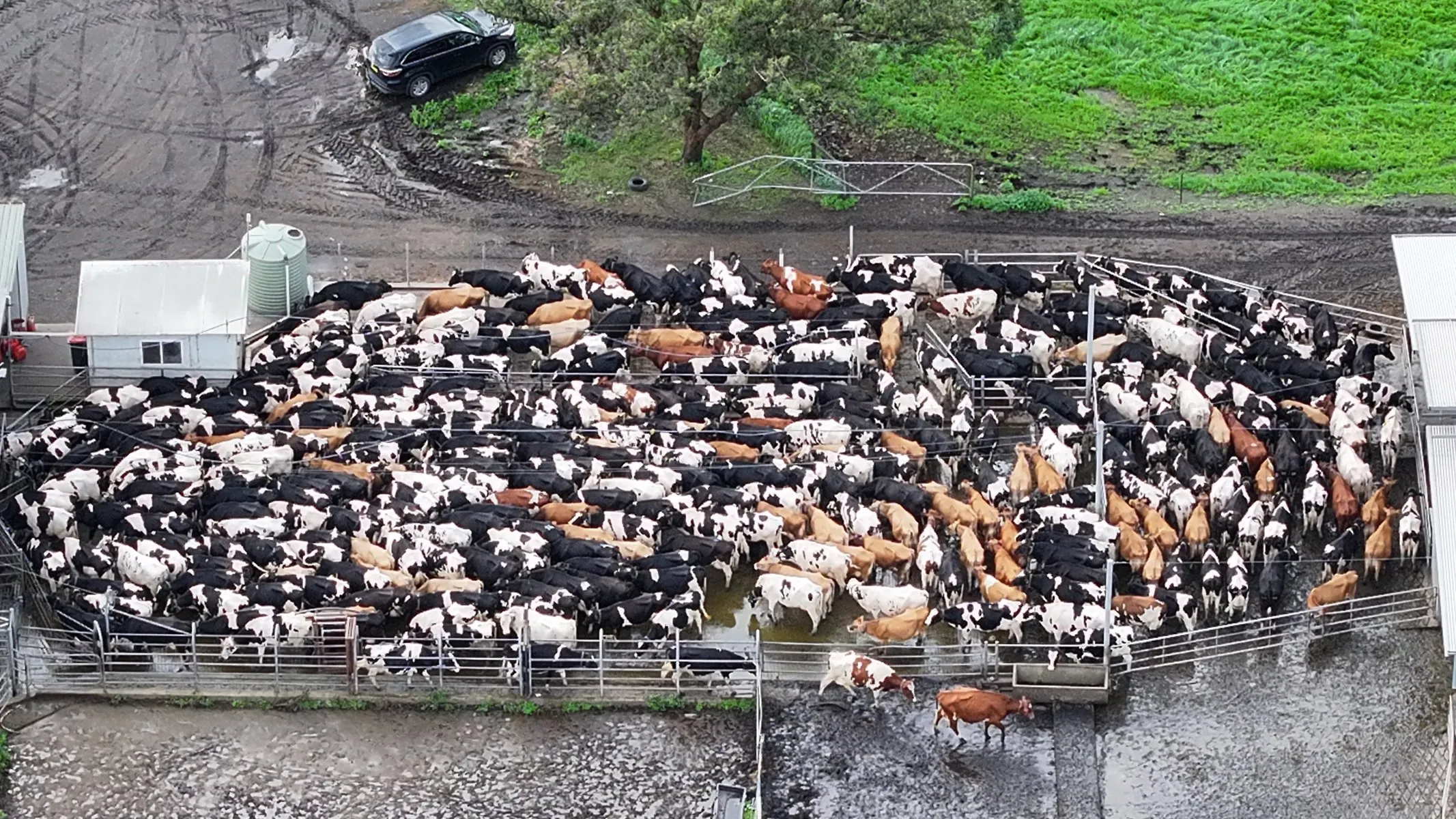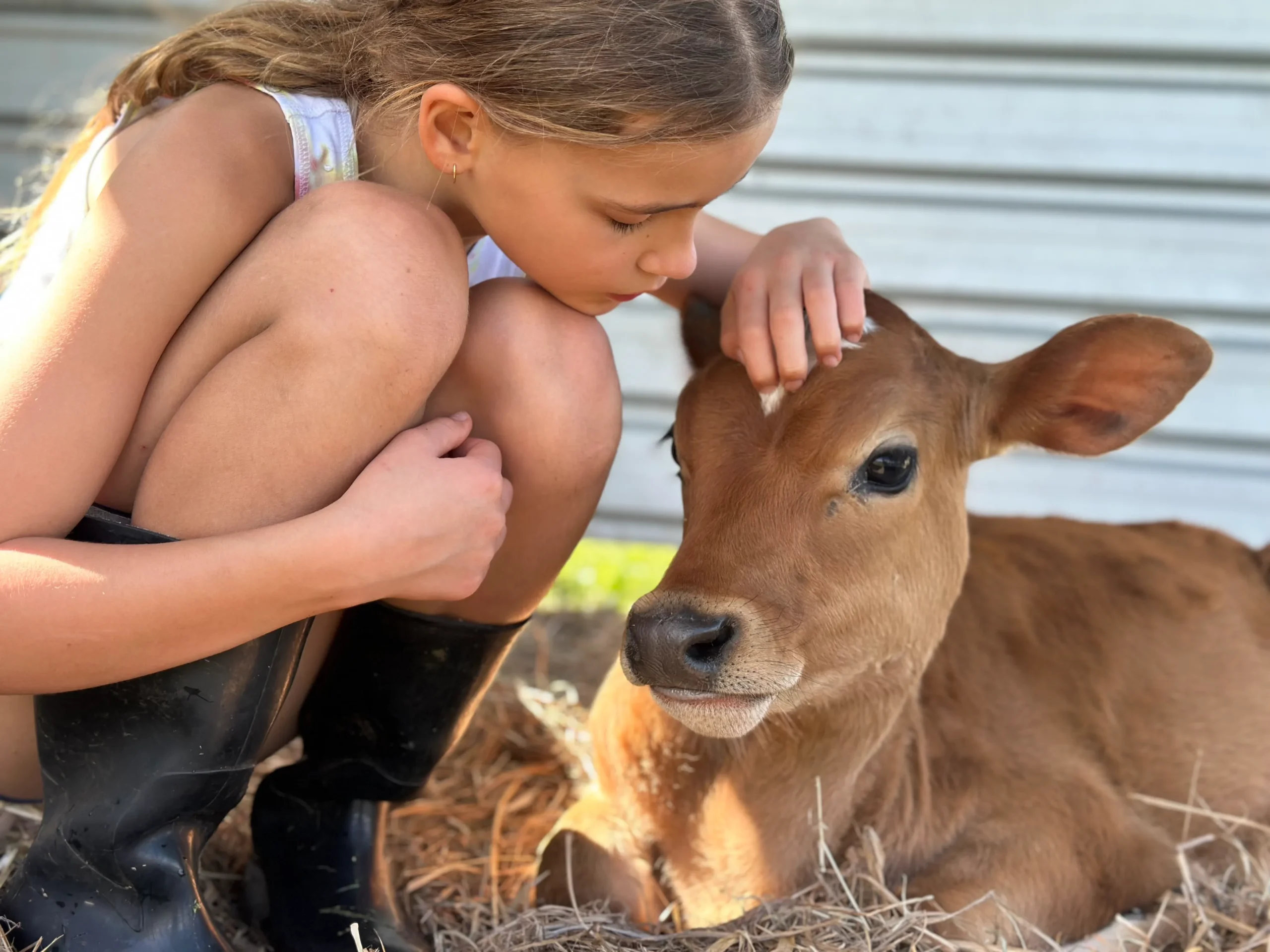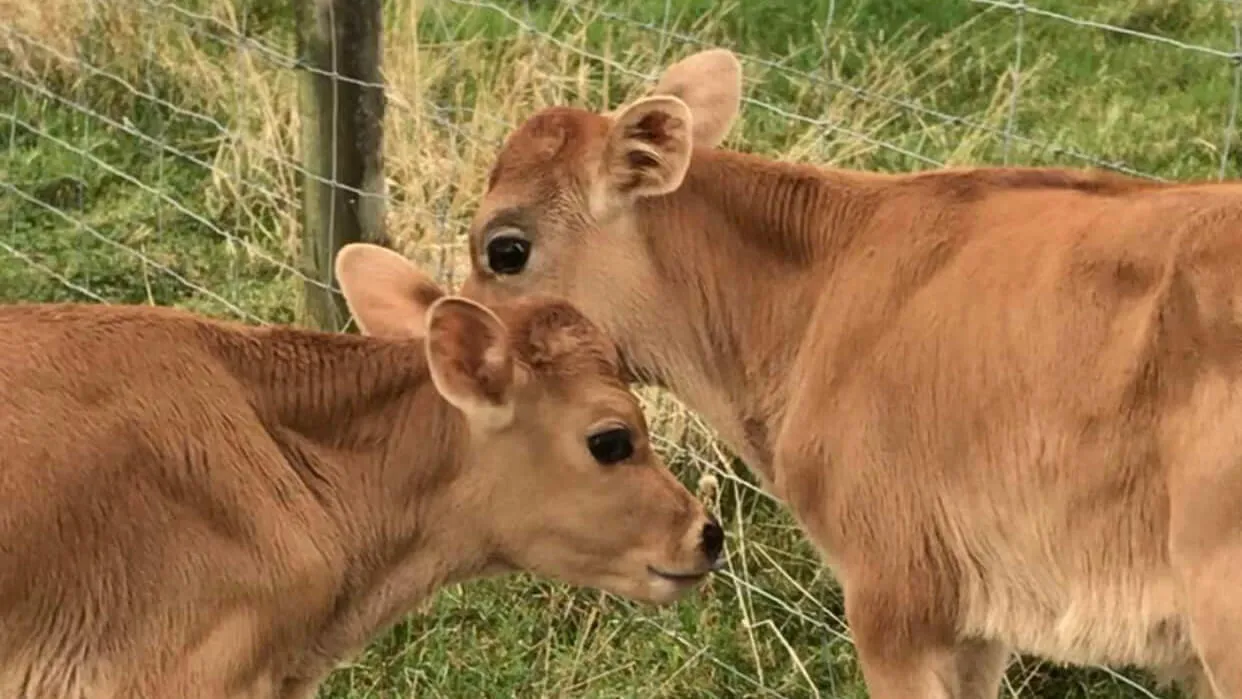Content warning.
This article contains confronting information about the dairy industry. If you have the capacity, we encourage you to continue reading, as the first step toward change is awareness.
What happens to the calves of dairy cows?
In today’s world, we’ve built systems that reward taking what we need from nature and discarding what we don’t – and the dairy industry is perhaps the cruellest example of that. Behind every glass of milk, dollop of yoghurt or platter of cheese, there lies a heartbreaking cost: the lives of baby calves.
To produce milk, a dairy cow must first have a baby. Just like humans, she carries her baby for around nine months, delivers and begins to lactate. But that’s where the bond is broken.
Calves are often separated from their mothers within hours of birth. The males – typically “of no use” – are destined for slaughter. The females are usually raised to replace their mothers, destined to live the same cycle of pregnancy, separation and production.
So what really happens to the calves of dairy cows?
In this production line, no one is left unscathed…
It’s not all green pastures and blue skies
For many, a dairy farm brings images of rolling hills and cows happily grazing. A comforting picture – and one that might be easier to hold onto than the dark reality.
“Bobby calves” might sound cute, but it’s anything but. It refers to the newborn calves stripped away from their mothers, often within a matter of hours or days, so the lactating mother’s milk can be taken for human consumption.
Just like humans, cows are incredibly social creatures. They seek friendship and close relationships. A study tracking nearly 200 dairy cows found that cows form stable bonds, especially with those of the same age or family line, and these bonds play an important role in herd welfare.
So, not surprisingly, taking a bobby calf away from its mother is a traumatising act. On farms, mothers can show visible signs of grief and distress: Hiding their babies from farmers, chasing after their babies as they’re driven off the farm, and crying for days, even weeks, after.
The forced separation causes social isolation, disrupts herd bonds, and can leave lasting impacts on emotional and social development.
Tragically, that’s just the beginning. The suffering doesn’t end with the separation – for mothers, male calves, female calves, and sometimes even the farmers who work in this system.

Male calves are destined for slaughter…
Male calves (and sometimes excess female calves) are often deemed as “waste” or “of no use” as they cannot grow up to produce milk for human consumption. In many cases, they’re destined for slaughter.
Sometimes, this cruel fate can take place straightaway on the farm, farmers bludgeoning them so they don’t have to spend money transporting them. In other cases, bobby calves can be transported to the abattoir to be killed for veal or meat. It sounds like something out of a horror film – yet it’s simply the reality of being a dairy calf.
Imagine being only days old, forced to clamber up a ramp and onto a truck … a scary place for a calf that should simply be finding its feet in the world alongside its mother. The journey that follows is often long and distressing: calves crammed into tight spaces, often deprived of feed, and left frightened and exhausted. Once the journey ends, so too does their short life – inside the slaughterhouse. Here, they can be brutally shoved, beaten, thrown and even killed while conscious (source).
Female calves raised to replace the herd…
While female calves are “of use” to the industry – they hold the ability to produce milk – it doesn’t mean they’re given kinder treatment. In many cases, female calves are still stripped from their mothers within hours of birth. Many are destined for the same tragic cycle as their mothers: forced repeated pregnancies and separation from their calves, all to meet the demands of the dairy industry.
Though they may initially escape the slaughterhouse, it doesn’t mean they’re destined for a long life. Many female cows are killed between 4 – 6 years of age once they’re no longer of use – significantly less than their natural lifespan of around 15 years.
Mothers face the endless cycle of birth and loss…
Perhaps worst of all, there’s no end to the cruelty for the mothers.
The life of a dairy cow is far from idyllic – it means continuous impregnation and separation from their calves to keep producing milk. Over and over again.
They’re drained to the last drop. A cow that hasn’t been selectively bred will naturally produce around 3 – 4 litres of milk a day for her calf. In contrast, a selectively bred dairy cow will produce up to 20 – 55 litres, with Holstein cows producing up to 60 litres.
This far exceeds what’s natural for them, leaving many cows unable to stand, walk and lay down. They also face increased risk of mastitis, inflammation of the udder, causing significant pain and welfare issues.

How do the farmers do this?
It’s easy to feel anger towards the farmers – and many do – but the reality is far more complex. The issue runs deeper than individuals, shaped by a demanding industry with limited education and legislation. That’s why we choose compassion, for everyone involved.
Studies show farmers aren’t immune to suffering, with almost half of Australian farmers (45%) feeling depressed. Isolation and extreme work hours are contributing factors – but also regularly participating in euthanasia can take its emotional toll, manifesting as symptoms of depression, grief or sleeplessness.
While some farmers have succumbed to the idea that the suffering of animals is just part of the industry, others have begun to take a more compassionate approach.
At ‘Til The Cows Come Home, we’ve witnessed remarkable transformations – farmers who once brought animals to us in heartbreaking conditions now showing care, compassion and even giving animals names. It’s proof that education and compassion don’t just change the lives of dairy cows, they can change human hearts, too.
So how can we rewrite the story?
In a world that loves dairy, finding a simple solution isn’t easy. Farmers are responding to demand and consumers are often disconnected from the reality behind their choices. But change is possible and it starts with compassion.
Many people choose to adopt a plant-based diet. This could mean embracing a completely vegan diet or starting with a few simple swaps: oat milk instead of cow’s milk in your latte. Coconut yoghurt instead of dairy on your cereal. Cashew cheese instead of cow’s milk cheese.
What if we started seeing animals as companions, not commodities? Calves are loyal, affectionate, funny, curious and deeply social. At ‘Til The Cows Come Home, we grow appreciation for this side of calves by rescuing and rehoming them, giving them a second chance at life and inspiring a kinder world for all beings.

You can make a difference
At ‘Til The Cows Come Home, we rescue unwanted, unviable, “waste’’ farmed animals, rehabilitate them in short-term foster care and rehome them into safe, forever-loving homes as companions.
You can help change the lives of dairy calves by adopting a calf or donating.
Adopt a calf
Adopting a calf means you’re saving a life. We connect with both farmers and families to help transform the lives of thousands of animals, just like Oscar.
Oscar was born into the dairy industry, destined to be “disposed of” simply because he couldn’t produce milk. That was, until foster carer Sari stepped in to save him. Through her care and the companionship of another rescued calf named Daryl, Oscar transformed from a terrified and traumatised baby into a gentle and affectionate friend, now living safely in his forever home.
And we have many more stories like it – like Bounty and Ollie and Teddy, our 10,000th adoption!
We understand that not everyone has the resources to adopt a calf, but a donation (no matter how small) can go a long way in giving farm animals the care and love they deserve.

Donate today
Your donation can help change the trajectory of a calf born to a dairy cow.
Your contribution will go toward essential medical care and give us greater capacity to rescue, care for and find a forever home for “waste” farm animals.
For you, it may be a small amount. For calves, it may be an entirely new future – one of love, care and compassion.